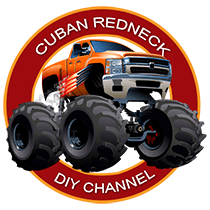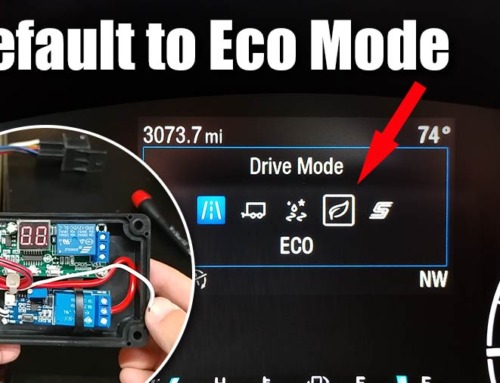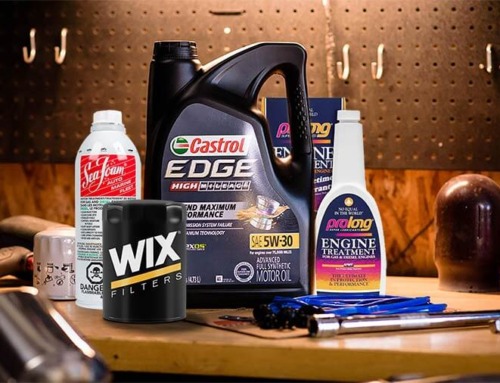Hello everyone, welcome back to the Cuban Redneck website. I hope everybody is doing well! Today I want to talk to you about the Harbor Freight folding clamping workbench. U.S. GENERAL makes this unit, and the current part number on the Harbor Freight website is 47844. Now, this unit, as many Harbor Freight products, does not have great reviews. I think that many are somewhat unfair. I mean, if you buy the lowest cost folding clamping workbench, costing less than $22, you can’t compare it unites costing $100 to $150! Although, after my modifications, I will challenge you to a structural and functionality contest!
You also have to understand that the units sold at Home Depot (Foldable Workbench by Professional Woodworker Model #51834), Lowe’s (Black & Decker™ Workmate® Portable Project Center/Vise – WM125), and AMAZON (Performance Tool W54025 Portable Multipurpose Workbench and Vise ASIN B002UBPZIE), are literally the same exact thing, more than likely made in the same Chinese factory for anywhere from $15 to $30 more.
With that said, I took this a little bit over the top by extending the deck, something none of those mentioned above units have. In reality, all you need to do to this foldable workbench is replace the stringers, and it will match or surpass the performance of those costing $15 to $30 more.
Assembling the Harbor Freight Foldable Workbench
As with many Harbor Freight products requiring assembly, the instructions on this U.S. GENERAL folding clamping workbench leave a lot to be desired. That is some I highlighted on my Harbor Freight workbench review video when putting together my garage woodworking workspace. Nevertheless, the assembly of the Harbor Freight folding clamping workbench is pretty straightforward.
So, setting aside what instructions say, here is what I recommend! On a flat surface such as a workbench or table, lay down the two wood pieces that make the deck. You want the four-hole pattern facing up and the piece that has the rule near you. Then place the clamping mechanism on top with the cranks near you and align the brackets with holes on the wood pieces. NOTE: All four holes may not align, and that is ok. Align either the left or right side first and then force the bracket into place and secure it in place with the 16 half-inch small screws provided in the hardware package.
With the deck and clamping mechanism assembled, you can move on to the legs. Position the legs into the clamping mechanism’s channel with the collapsable bracket facing out. These go in place with the 4X 1-3/4 inch bolt, the matching locking nuts, and the eight flat washers provided. Once done, this is an excellent time to install the feet. These are the little square boots. They have an uneven design, and they gt install with the lowest corner pointing towards the center of the folding clamping workbench.
With that out of the way, the only thing to do is mount the stringers across the sets of legs. There is no front or rear. They are both the same. You should only have eight bolts with matching nuts and washers left, and that’s what you are going to use.
Modifying the Harbor Freight Foldable Workbench
Extending the Deck Area – If there are any optional mods on this video, this is it! However, this modification will extend the deck area from about 9-inches to more than 20-inches. It all starts with a 16 X 48 X .750 pieces of MDF from Home Depot that I cut to match the width of the deck. The OEM piece has a series of holes for the movable pegs. These holes are about .800 of an inch. I don’t have a bit that size, so I opted for screwing the two pieces together and duplicating the pattern on my $15 router table. Replacing that OEM part with MDF means adding weight to the entire folding clamping workbench and the muting points of the clamping mechanism. The added weight caused the extended part of the deck to sag when open. The solution for this was a pair of old drawer tracks I had salvaged from an old computer desk. By mounting the drawer tracks on the side of the clamping mechanism adds strength and prevents the deck extension from sagging! Know that the OEM pieces are not quite ¾ of an inch! To get the two to align, I mounted some #8 flat washers between the OEM pieces with the ruler markings and the clamping mechanism.
Foldable Workbench Legs – This is a straightforward modification everyone should consider making. The way the legs fit in the clamping mechanism will have the leg rubbing against the clamping mechanism’s inner walls. That will not only cause a scuff mark and an area prone to rust but, over time, damage the foldable workbench. By adding washers on each side of the leg, you reduce friction and the change of rust forming.
Foldable Workbench Stringer – By replacing or modifying the foldable workbench stringer between the legs, you will solve 80-90% of the complaint and the negative reviews associated with the U.S. GENERAL folding clamping workbench. I guess adding several self-tapping screws on each side along with the hardware provided is an improvement, but I found the material quality unacceptable. Although of the same gauge, the construction plates I used are substantially more robust and of a more rigid material.
The goal is to keep the folding clamping workbench from flexing from side to side. I opted for MDF to keep the cost down, but if budget permitting and 1-inch square or even an angle will do a better job than the OEM piece.
Even though I feel I cut some corners to keep the cost down, the mods of the Harbor Freight folding clamping workbench exceeded expectations. I am into this U.S. GENERAL unit for about $17 and spend an additional $10 on materials. Despite some of the comments on YouTube, I don’t think that $50 folding clamping workbenches from Home Depot, Lowe’s, or Amazon and any better, and I suspect they may require similar modification. Thank you for stopping by, and I look forward to having you as a subscriber at the Cuban Redneck DIY channel on YouTube!





